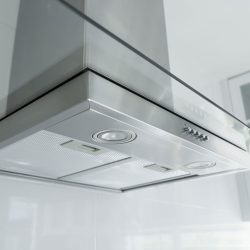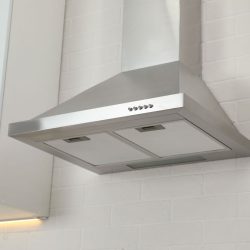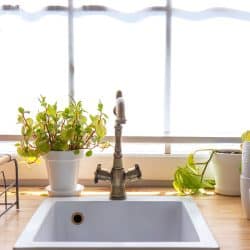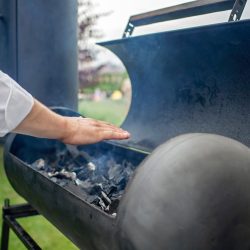A kitchen range hood is meant to let the smoke out, but what do you do when it starts letting water in? There are a couple of things that could be causing your range hood to drip water when it rains, each with a solution. We have done the research to help you fix this!
The leading cause of your range hood dripping when it rains is a leaking roof or vent pipes. When this happens, you will need to repair parts of your house, such as the roofing, vent system, and insulation.
Despite being the main reason, a leaking or damaged roof is not the only cause for a dripping range hood. In the following few sections, we will go over some other possible causes and their solutions. Keep reading to learn more!
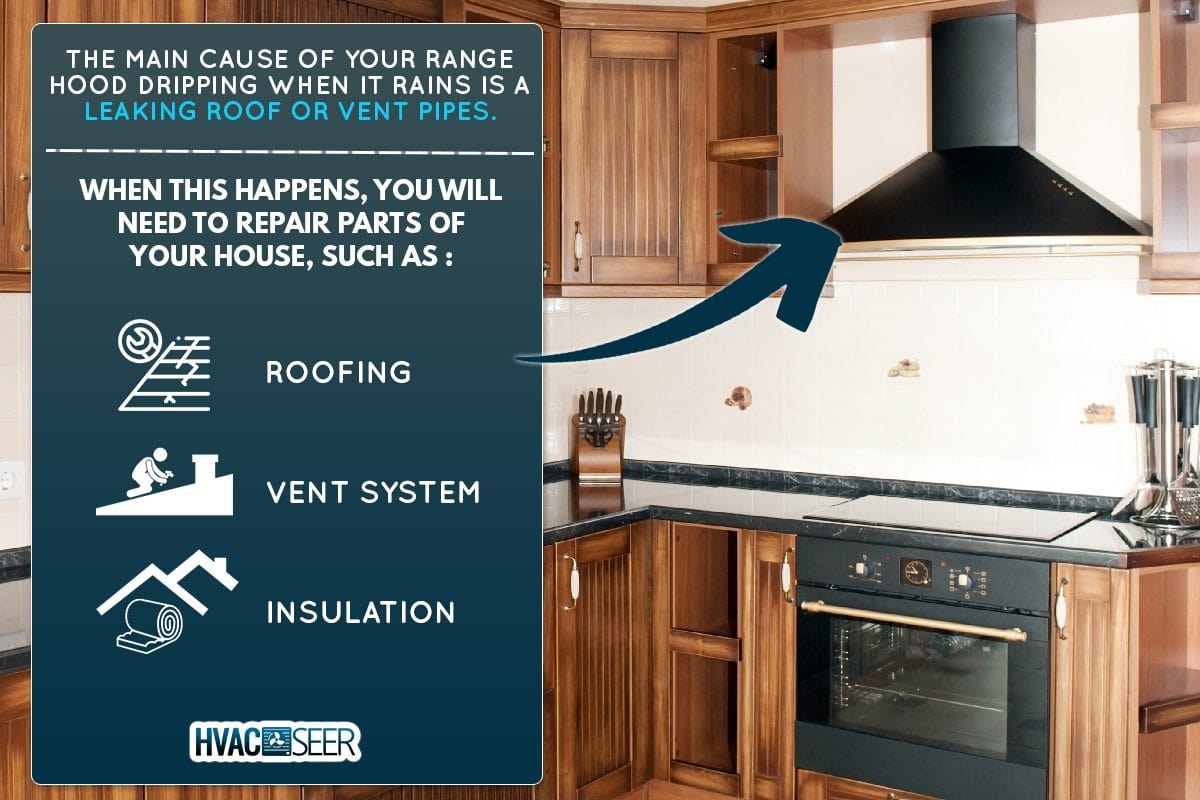
Why Is Water Dripping From My Range Hood?
A kitchen range hood can also be called an extractor hood, kitchen hood, or exhaust hood, depending on where you are from or what the manufacturing label says. All these terms can be used interchangeably and refer to the same thing.

Before you can work on fixing your range hood, you will have to pinpoint the source of the problem.
A quick assessment can also help you decide if fixing your range hood is a task you can do on your own or if you have to call up a professional.
Ultimately, it is recommended to call a professional rather than fix a leak yourself. Since you will be dealing with vent systems, call a roofer to help you.
Here are some likely causes for a dripping range hood:
Damaged Roofing And Vent System
As it rains, water can accumulate on parts of your roof where it cannot properly drain. Leaks in your home's roofing system could lead to water moving down the vent system and leaking into your home through the range hood.
The following few causes can occur without rain, but rain would undoubtedly aggravate the problem. This is especially so when the water has a way into your vents.
Poor Insulation
Ideally, your range hood must be well-insulated. It connects directly to your vents so that the smoke and steam have a place to move out of your house while cooking. With poor insulation, water vapor from steam gets trapped in the vents.
Poor insulation leads to irregular temperature throughout vent ducts. Eventually, trapped steam in your vents will condense from the uneven temperature.
When this steam condenses, it turns back into liquid. This is more likely to happen when it rains or in colder weather, as your ducts will have trouble keeping the internal temperature constant.
Cold temperatures lead to condensation, which should not happen until after the vapors have left your vent system!
Dirt And Blockages Clogging Up The Filters
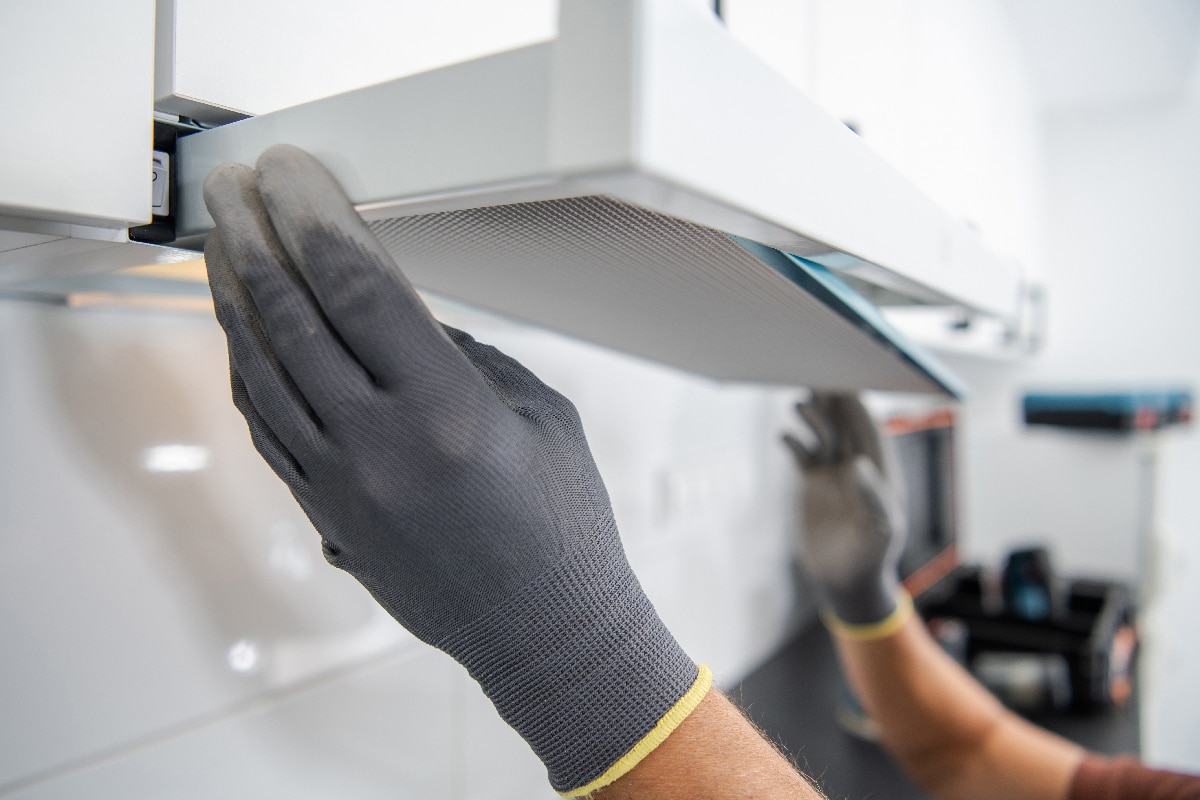
As time passes, your range hood will accumulate dirt with regular use. Grease, like water, can become airborne. It is then filtered through the range hood and into the ducts.
This grease and dirt will build up in your vents without regular cleaning. This causes unnecessary strain on your system. The blockages will cause pipes to leak, leading to water dripping down your range hood.
Damaged Range Hood Mechanism
Faulty range hoodies out anything through the ducts. This may be due to a broken fan or damage to your range hood mechanism.
Damaged exhaust fans cannot correctly push out steam, smoke, and vapor.
This leads to trapped vapor in your air ducts. When this vapor is unable to escape, it will start to go through condensation and drip back down your range hood.
How To Stop Rain From Leaking Through the Range Hood
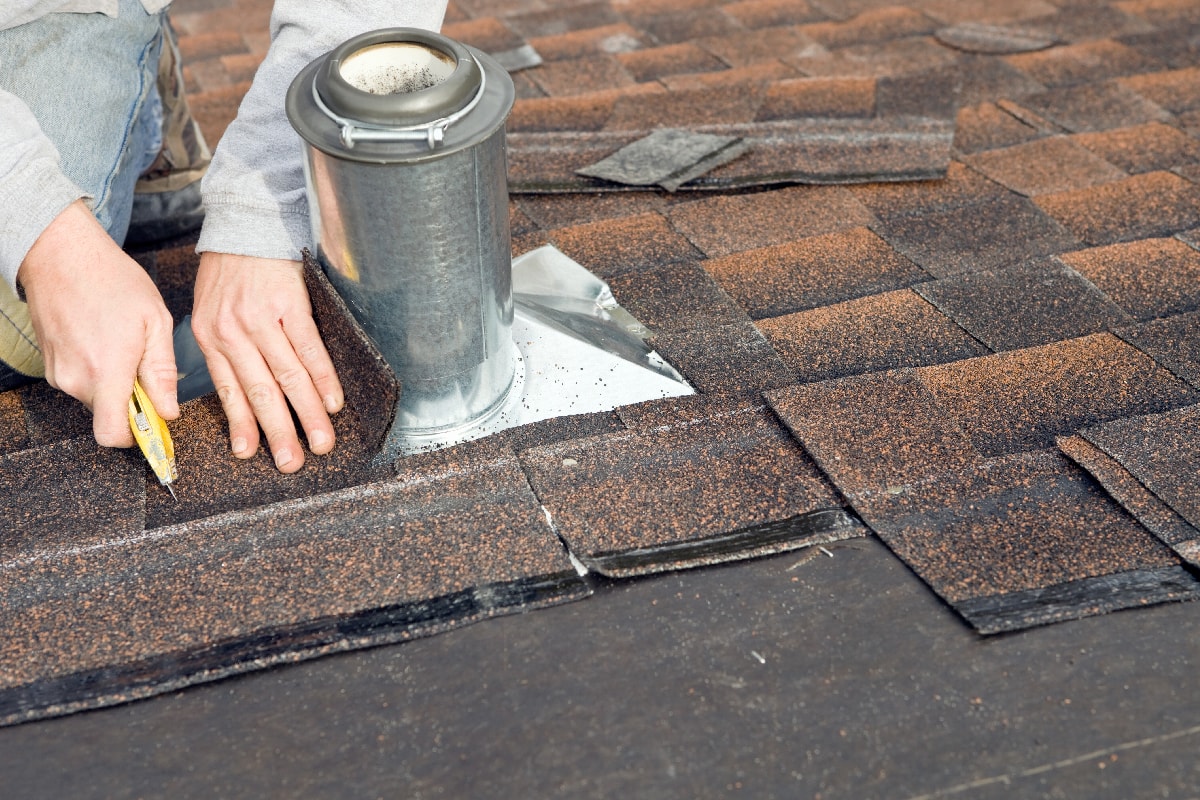
Now that you know what could be causing your range hood to drip with water, you can start addressing the problem. Here are some suggestions:
Repair Your Roofing
Depending on what needs patching up, this is one solution you can most likely do on your own. There are various ways to fix a damaged roof that drips when it rains.
For more superficial damage, you can use roofing tar. Patch up any holes on your roof to keep the rain from leaking into your ductwork.
You can locate which parts of your house need fixing by checking for moisture stains on the ceiling or following the leak trail. Aside from roofing tar, you can also use roofing cement to patch up leaks.
Roofing cement works on the average roofing shingle, typically made of asphalt.
Some roof leaks can be repaired from the inside. Or, they may be harder to reach for repair. Use whatever or the appropriate method to prevent rainwater from entering your vent system.
Properly Insulate Your Duct Work
Insulating starts in installation. Poor insulation is more difficult to fix but not impossible. Insulation can also get torn over time, so keep a lookout for that.
Fiberglass is a good insulator against heat loss for duct systems. Use foil-faced fiberglass insulation for insulating your ducts. You can purchase rolls of insulation online.
If there is only minor damage to the insulation, then you can patch it up with a piece of replacement insulation.
Click here to see an insulation roll on Amazon.
Clean Your Range Hood And Vents
Your range hood filter catches all sorts of grease and grime. You will have to clean it regularly to ensure it will not clog up. Make it a habit to clean your range hood at least once a month.
Here are the steps to cleaning your range hood:
- Disassemble the filter based on the range hood's manufacturer's instructions.
- Soak the filter with soap and warm water. You can use store-bought degreaser or homemade cleaning alternatives.
- Let the filter sit for 5-10 minutes.
- Scrub the dirt out of the filter and rinse.
- Spray down the range hood with cleaner and wipe clean.
- Wipe the range hood down with clean water to rinse off.
Use your preferred method to clean your vent ducts. Like with the range hood and filter, you can use soap, water, or a degreaser.
It will also help vacuum out the ducts just to eliminate any clogged dirt that may have built up.
Click here to see a kitchen degreaser on Amazon.
Repair Or Replace Your Range Hood
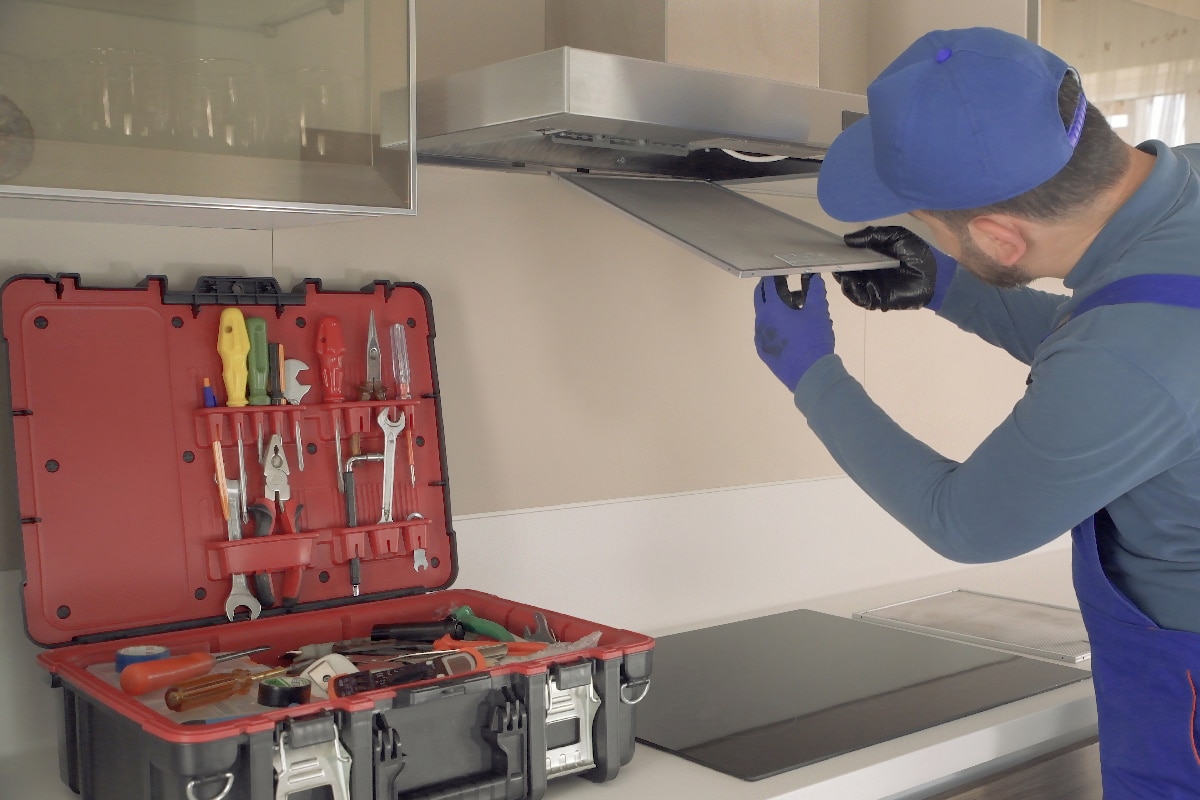
You might find that your ducts and roofing are perfectly fine, but your range hood is damaged. In that case, you can call a professional to have it repaired or to have some parts replaced.
If your range hood is still under manufacturer warranty, you may be able to get it fixed for free or at a lower cost. But, if it is older than ten, it may already need replacing.
Dangers Of A Dripping Range Hood
Range hoods are a vital fixture in your kitchen. Though they are not required in homes, they are essential to your air quality and safety.
A range hood filters out all the smoke, fumes, and airborne combustibles, such as grease.
An exhaust fan from within your range hood pushes smoke and steam out of the ventilation system, leaving the air in your kitchen clean. Thus, a faulty and dripping range hood could lead to some problems.
While water leaks through the ductwork and down your range hood, the appliance will not be unable to work correctly. This can cause smoke to stay trapped in your kitchen while you cook.
Faulty range hoods lead to polluted air in your kitchen and lingering odors. If your kitchen is poorly ventilated without the range hood, it could cause potential health risks due to breathing in too much smoke and fumes.
Finally, if you have smoke alarms installed in your home, they could detect the smoke in your kitchen and raise a false alarm. Not only is this annoying, but also another potential safety risk.
To Finish
Damages to your roof and pipes can lead to water dripping down your range hood whenever it rains. You can patch up your roof and any parts of your house that causes leaks and water accumulation in the ductwork.
We also discussed other causes for leaking range hoods and ways to fix them. If you ever encounter this problem in your kitchen, you can refer to the suggestions we laid out!
Did you find this post helpful? Check out these posts before you go:
Range Hood Making Noise When Off - What's Going On?
How To Remove An Over The Range Microwave




